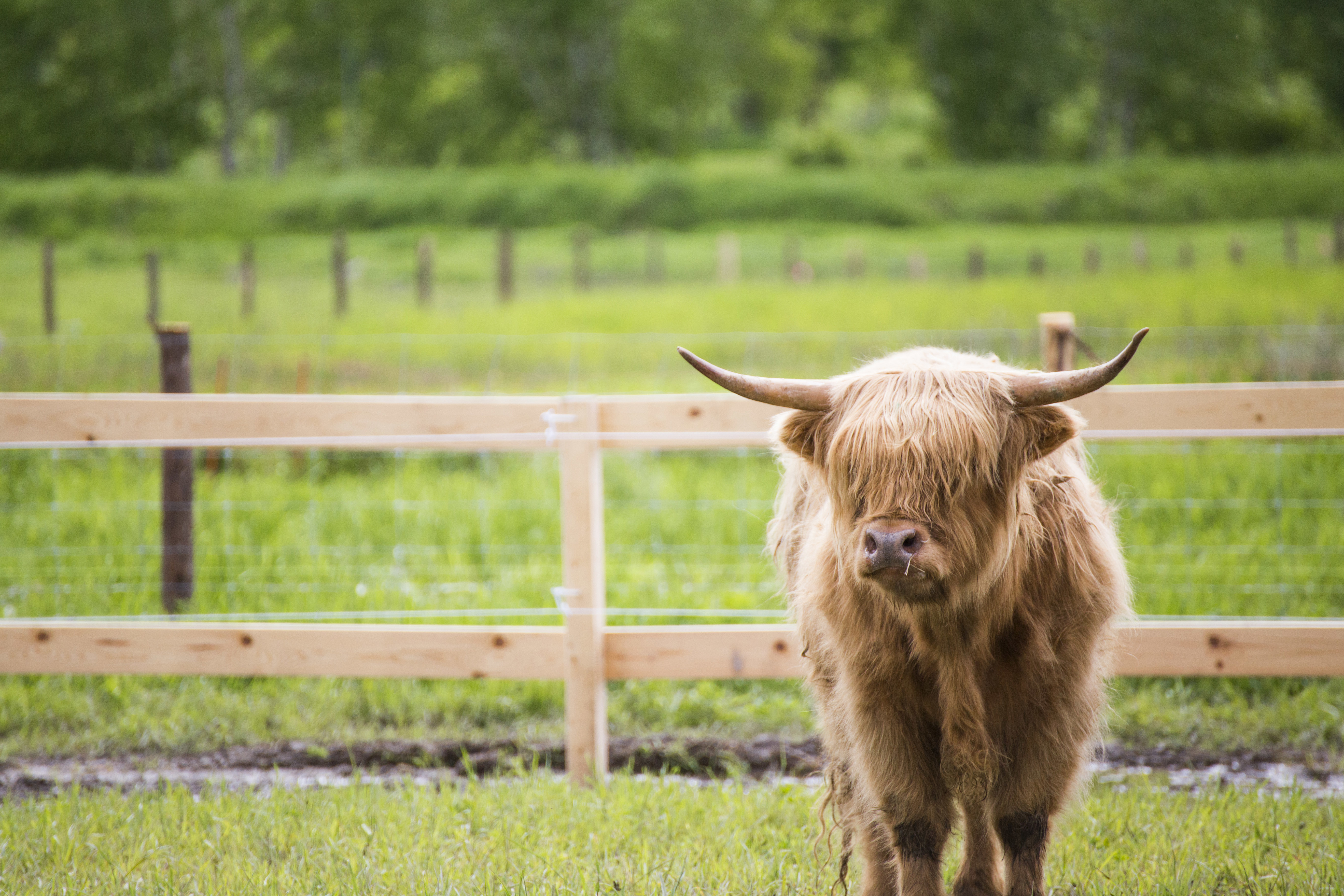A farm at the Hotel & Spa Le Germain Charlevoix
The recent addition of animals on Le Germain Charlevoi Hotel & Spa's grounds is adding even more charm to the already beautiful portrait. We thought you might like to get to know them.
At Le Germain Charlevoix Hotel & Spa, we are proud to give our guests a taste of the best in Charlevoix- and Quebec-grown products. The beautiful vegetables, herbs and flowers that grace our plates and landscape are lovingly grown by our gardeners, André and Philippe. Led by chef Sylvain Dervieux, our kitchens strive to keep our menus as local as possible by using top-quality ingredients sourced directly from Charlevoix. Even our decor is inspired by the regional countryside, and the recent addition of animals has only added to its charm. We thought you might like to get to know them.
HIGHLAND CATTLE
As their name suggests, Highland cattle are native to the Highlands and west coastal islands of Scotland, both marked by a rugged climate and gusting North Atlantic winds. These rustic animals possess a thick, double coat of hair that is better suited to cold rather than warm temperatures. This is why you’re likely to see them huddled in their shelter for shade during the summer months. Our cattle come from La Ferme Fort-Rajo in Beauce.

LA FERME BASQUE DUCKS
La Ferme Basque raises mulard and Barbary ducks. A hardy, rustic and heftier breed, the mulard is a cross between a male Barbary and a female Pekin. Males often bear black markings on their heads and tails.
La Ferme Basque de Charlevoix is devoted to customer satisfaction, offering high-quality farm products that are certified as local Charlevoix fare. Using artisanal methods, it raises and fattens ducks right on its own property, observing practices that respect the well-being of the animals and the authenticity of tradition.

TOMMY’S SHEEP
In 2010, Les brebis de Tommy (Tommy’s sheep) relocated from Abitibi to Charlevoix. Tucked away in the sheepfold and mountainous pastures of the Maison Maurice Dufour aging house, the animals are provided with exceptional care under the watchful eyes of Tommy the Shepherd and his dog, Spike.
Did you know? Domestic sheep range from white to dark chocolate, and some even have speckled or piebald fleeces. They possess an excellent sense of smell and, like all breeds of sheep, have scent glands just in front of the eyes and between their toes.
The Maison produces several sheep’s milk cheeses, including La Tomme de Brebis, Le Bleu de Brebis de Charlevoix, and Le Secret de Maurice.

LA MEUNERIE DE CHARLEVOIX CHICKENS
Hens begin laying eggs at the age of 5 to 6 months. After reaching its peak when the hen is 3 years old, egg production declines to zero by the time the animal is 8 years of age. At this time, you may choose to make your hen into a meal or, given its average lifespan of 10 years, allow it to peacefully live out the rest of its days in your garden.
Laying hens produce roughly between 150 and 250 eggs per year. They do not always lay eggs every day and will often produce none for certain periods. Hens lay the most eggs in spring and summer, producing far fewer during the winter and even none at all if it is too cold.
Did you know? Domestic hens are said to cluck, but “laying hens” will cackle and screech before, during, and after they lay an egg.

DAMIEN’S PIGS AND PIGLETS
Les Viandes Biologiques de Charlevoix produces a white pig bred from female Yorkshire or Landrace varieties and male Duroc/Pietrain cross-breeds. Mothers and their little ones are raised together with hogs in straw-bed pens. The animals consume a large amount of straw, which is rich in fibre.
All livestock are fed an organic feed that is produced on site using only ingredients from the farm. It is composed mainly of wheat, oats, hulless oats, barley and peas, all grown organically in Charlevoix over more than 2,500 acres of land. Our animal feed contains no antibiotics, hormones or non-organic growth factors.
Did you know? Pigs are unable to lift their heads very far because of the shape of their backs.
You will find these beautiful animals behind the hotel, between the spa and river. Stop by for a visit while taking a walk through our gardens or on your way to the Baie-St-Paul beach.
There’s so much to discover!
